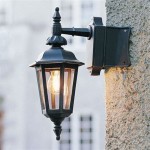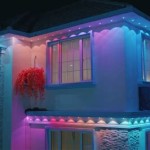How to Make Cushions for Outdoor Furniture
Creating comfortable and aesthetically pleasing cushions for outdoor furniture can significantly enhance the enjoyment of outdoor spaces. While purchasing pre-made cushions is an option, crafting custom cushions allows for personalized design choices, ensuring a perfect fit for specific furniture dimensions and individual stylistic preferences. Furthermore, the process offers control over material selection, enabling decisions based on durability, weather resistance, and cost considerations. The following details the steps involved in crafting outdoor furniture cushions, from initial planning to final assembly.
Key Considerations Before You Begin
Before embarking on the cushion-making process, several preliminary decisions are crucial. These decisions will influence the materials required, the complexity of the project, and the overall aesthetic outcome.
1. Determining Cushion Size and Shape: The first step involves accurately measuring the furniture on which the cushions will be placed. Careful attention should be paid to the length, width, and thickness (height) of the desired cushion. Consider the overall design. Will the cushions be simple squares or rectangles, or will they require more complex shapes like circles, trapezoids, or custom contours? Accurate measurements are paramount to ensuring a snug and aesthetically pleasing fit. Document the measurements clearly for future reference.
2. Selecting Appropriate Fabrics: The choice of fabric is arguably the most important factor in determining the longevity and performance of outdoor cushions. Outdoor fabrics are specifically engineered to withstand prolonged exposure to sunlight, moisture, and temperature fluctuations. Look for fabrics labeled as "outdoor fabric," "solution-dyed acrylic," or "water-resistant." Solution-dyed acrylic fabrics are particularly well-suited for outdoor use due to their exceptional fade resistance and water repellency. Other options include polyester-based fabrics treated with water-resistant coatings. The fabric should also be chosen based on the desired aesthetic. Consider the color, pattern, and texture of the fabric in relation to the overall outdoor décor. It is advisable to order fabric samples to assess the color and feel firsthand before committing to a larger purchase.
3. Choosing Cushion Filling: The filling material determines the comfort and support provided by the cushion. Several options are available, each with its own set of advantages and disadvantages. The most common fillings for outdoor cushions include:
- Polyurethane Foam: A versatile and relatively inexpensive option. It is available in various densities, allowing for customization of firmness. However, standard polyurethane foam can retain moisture, potentially leading to mold and mildew growth. Opt for open-cell foam or reticulated foam, which allows for better airflow and drainage.
- Polyester Fiberfill: A soft and lightweight material that is resistant to mildew and mold. It is a good choice for back cushions or pillows that require less support. However, it tends to flatten over time and may require more frequent replacement.
- Dryfast Foam: A specialized type of open-cell foam specifically designed for outdoor use. It allows water to drain freely, preventing moisture buildup and promoting quick drying. While more expensive than standard polyurethane foam, Dryfast foam offers superior performance and longevity in outdoor environments.
- Shredded Foam: Utilizing shredded foam provides a more eco-friendly option by repurposing scrap materials. While it provides good support it can at times lack the uniformity of other options.
Consider the desired level of comfort, support, and moisture resistance when selecting the appropriate filling material.
The Cushion Construction Process
With the planning phase complete, the next step involves the actual construction of the cushions. This process includes pattern creation, fabric cutting, sewing, and filling.
1. Creating a Pattern: Based on the measurements taken earlier, create a pattern for the cushion. For simple square or rectangular cushions, this can be done directly on the fabric using a ruler and fabric marker. For more complex shapes, it is advisable to create a paper pattern first. This allows for adjustments and corrections before cutting the fabric. Remember to add seam allowances (typically 1/2 inch to 1 inch) to all edges of the pattern. If the cushion requires piping or welting, account for the additional fabric needed.
2. Cutting the Fabric: Lay the fabric on a flat surface and carefully position the pattern pieces on the fabric, paying attention to the grain direction. Pin the pattern pieces to the fabric to prevent shifting during cutting. Use sharp scissors or a rotary cutter to cut the fabric along the pattern lines. Ensure precise cuts for a professional-looking finished product. For patterned fabrics, take care to match the pattern seamlessly across adjoining pieces. Cut the fabric for the top, bottom, and any side panels of the cushion.
3. Sewing the Cushion Cover: Assemble the cushion cover by sewing the fabric pieces together according to the pattern. Start by sewing the side panels to the top and bottom pieces. Use a sewing machine with a durable thread suitable for outdoor use, such as polyester or nylon thread. Reinforce seams by backstitching at the beginning and end of each seam. If adding piping or welting, insert it between the fabric layers and sew it in place along the seam lines. Leave an opening along one side of the cushion cover for inserting the filling. The size of the opening should be sufficient to easily accommodate the filling material. Consider adding a zipper or Velcro closure to the opening for easy removal and cleaning of the cushion cover.
4. Filling the Cushion: Carefully insert the chosen filling material into the cushion cover. Ensure that the filling is evenly distributed throughout the cushion to avoid lumps or unevenness. Use your hands to fluff and shape the filling as needed. The amount of filling will determine the firmness and loft of the cushion. Experiment with different amounts of filling to achieve the desired level of comfort. Once the cushion is filled to the desired consistency, close the opening by sewing it shut or using a zipper or Velcro closure.
Adding Finishing Touches and Enhancements
After the basic cushion construction is complete, consider adding finishing touches and enhancements to improve the appearance and functionality of the cushions.
1. Adding Piping or Welting: Piping or welting adds a decorative edge to the cushion and can enhance its durability. It involves inserting a cord or rope between two layers of fabric and sewing it along the seam lines. Piping can be made from matching or contrasting fabric to create different visual effects. It also helps protect the seam from wear and tear.
2. Adding Ties or Straps: To prevent the cushions from sliding off the furniture, consider adding ties or straps. These can be attached to the corners or sides of the cushion and tied or secured to the furniture frame. Ties can be made from fabric or webbing and should be long enough to securely fasten the cushion.
3. Applying Water-Resistant Treatments: While outdoor fabrics are generally water-resistant, applying a water-repellent spray can further enhance their protection against moisture. These sprays create a barrier on the fabric surface, causing water to bead up and roll off. Reapply the treatment periodically, especially after washing the cushion covers.
4. Consider Adding Buttons or Tufting: For a more decorative and structured look, consider adding buttons or tufting to the cushion. This involves stitching through the cushion and attaching buttons or creating indentations in the filling. Buttons and tufting can add visual interest and prevent the filling from shifting. Use buttons specifically designed for upholstery to ensure durability.
5. Installing Zippers: Installing zippers alongside or in place of sewn openings, allows for easy removal and cleaning. Hidden zippers create a streamlined, professional aesthetic. Be sure to select marine grade or robust zippers that can withstand the elements.
By following these steps and considerations, it is possible to create custom outdoor furniture cushions that are both comfortable and durable. The ability to select materials and customize designs allows for a personalized touch that enhances the enjoyment of outdoor living spaces.

Diy Outdoor Cushions A Erfly House

Diy Outdoor Cushions A Erfly House

Sew Easy Outdoor Cushion Covers Confessions Of A Serial Do It Yourselfer

Diy Outdoor Cushions A Erfly House

How To Make Cushion Covers For Outdoor Furniture The Ruffled Purse

Diy Outdoor Seat Cushions Curlycraftymom Com

Easy Ways To Make Indoor And Outdoor Chair Cushion Covers In My Own Style

How To Make A No Sew Chair Cushion Cover In My Own Style
Make Your Own Outdoor Cushions A Beautiful Mess

Diy Outdoor Cushion In Less Than An Hour How To Make Cushions For Patio Furniture







